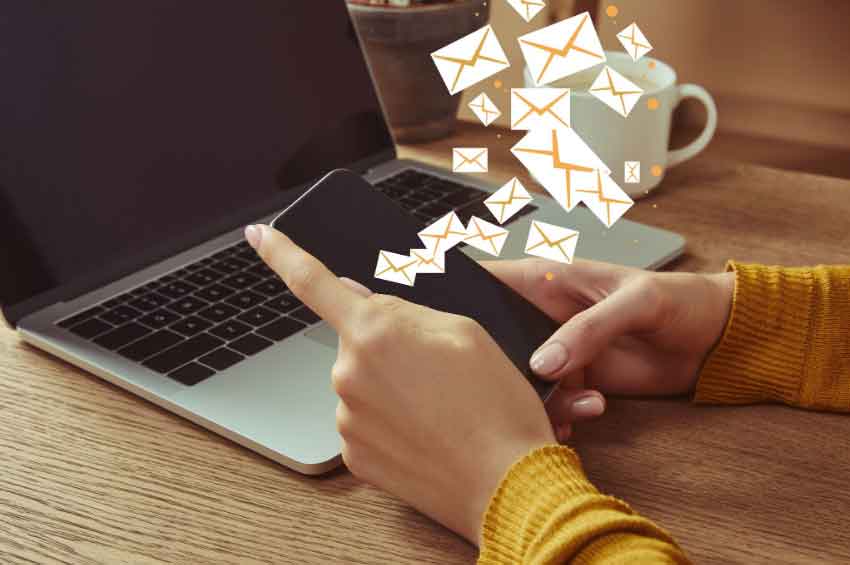Show:
The Ultimate Email Writing Script to Creating an Engaging Welcome Email Sequence
When marketing your business, one of the best tactics you can take is mastering the art of email writing.
Now, you may be asking yourself, “how important can emails really be?”
As it turns out, very.
Think about the emails you receive on a daily basis – how many do you actually open, and how many do you glance at, mark as “read,” and move on?

If an email doesn’t seem worth your time, you won’t open it – and neither will your target audience, unless it draws them in.
So, this begs the question – how can we make emails worth somebody’s time? In a time flushed with advertisements, solicitations, and email list after email list, it isn’t always easy. That’s why it’s important to gain (and maintain) your audience’s attention from the beginning.
Let’s look at some tips for best practices when creating your welcome email sequence, so you can attract the attention of your target audience and drive more long-term business!
Step 1: Welcome emails must be just that: welcoming.
Sounds like common sense, right? However, if an email does not draw the audience in from the beginning, they won’t give it the time of day – that’s why it’s important to know exactly who your audience is and how they would like to be welcomed.
Try out some of these examples to get a sense of how you think your audience should be greeted off the bat – what sounds like the best fit?
- Let’s get started.
- Welcome to the team!
- We’re glad you joined the community.
- Hey there, new friend!
- We are delighted you’ve decided to partner with us.
- Happy to have you here!
- Thank you for being part of our mission.
- Yay, you’re here!
Notice how these greetings all acknowledge that someone new has entered the metaphorical party, but they all have a very different voice suggesting why the guest is there and how they should appropriately be welcomed – so, what’s best for your guest?

Step 2: Place all important information in the beginning of the email body.
Drawing your audience in and getting them to simply acknowledge and open your welcome email may be the first step, but the next step is maintaining their attention – which, again, in a time of immediacy and information overload, isn’t always easy.
Don’t beat around the bush – once you’ve greeted your guest, tell them exactly why they should choose to stay at your party, instead of heading over to the one going on next door.
As an added tip from Rochester Institute of Technology, “Add indentations or spaces between paragraphs for easy reading and skimming. In addition, keep your most important information to the beginning of each paragraph so they are able to recognize your most important points.”
Place any and all pertinent information in the beginning of your email body – coupons, credentials, rewards programs, information on your mission, etc. Take a look at these examples below:
- New members receive 15% off their first order!
- Free shipping if you shop with us today.
- Store credit on every dollar you spend!
- Each order donates 10% to _____________.
- Try our award-winning products.
- Sign up to earn more!
People like to feel special – so, how is your business going to make them feel special? What should they know about your business? How does it differ from your competitors? What can you offer your audience that other places cannot? Put it all in the body, clear and concise.
Step 3: Include a call to action.
You have your audience’s attention, you’ve given them all the information they need to know, and now what? What should they do?
This is where the call to action comes in. Your call to action, or CTA, should be direct and blatantly clear. Your audience doesn’t want to have to guess where they should go next – they want to be given a detailed roadmap.
The information you included in the body will tell them why they should want to take action, but it is even more important to clearly define what exactly that action should be – or else it simply won’t happen. These are some common CTA examples that state exactly what the speaker is prompting the reader to do:
- Shop now!
- Click here to start earning exclusive deals.
- Sign up for our members program!
- Make a difference by donating today.
- Open a rewards card for an additional 5% off!
- Contact us to get started.
Each one of these CTAs outlines exactly what the reader should do. Make sure to also include any important hyperlinks or contact information if you are prompting your reader to redirect their attention to another platform – otherwise, even if the CTA is clear, they won’t take the time to complete the action.
Always remember to make it as easy as possible for your audience to get where you’d like them to go!

Bonus: Follow this golden rule.
When copywriting, it is important to write in such a way that puts the reader in the driver’s seat and makes them the hero of their own story – so, follow in the footsteps of that golden rule and write your audience as the protagonist in your story!
This can be done simply by stating how your reader will benefit from your product/service, rather than how your product/service will help them. For example, “You can reclaim your life with our health and wellness program!” sounds a lot better than, “Our health and wellness program has helped clients lose weight.”
So much of a successful welcome email sequence relies on the semantics of your email, and one of the best ways to drive loyal, long-term business is to make your reader feel like the “main character.”
They don’t care, necessarily, about the defining factors of your business – they care more about how they, specifically, will benefit from said factors. After all, your audience is never really out to seek your product/service – they are out to seek the transformation from your product/service.
By making the reader the hero of your story, they’ll be able to relate more with the content and will subsequently feel more driven to take the action you are prompting them to take.
Welcome Email Sequence – example template outline
At this point, you have a strong foundation to help get you started on writing your welcome email sequence. We have also taken the liberty of outlining an example of a welcome email template, in order to give you an idea of how a welcome email may typically look.
Notice where all the important steps from above are included within the outline. Feel free to use this template to plug in the information from your own business, based on the tips you’ve learned. Don’t forget to make it your own and target it based on your unique audience!
Greeting
Hey there, new friend! We are so happy you joined the team.
Introduce reader as hero
If you’re here, you probably care about sustainable ways to shop. We love that! You can feel good about your purchases at _________ by knowing you are supporting local artists who use exclusively recycled/repurposed materials.
Give all important information
Your purchase goes a long way, as each order donates 10% to college arts programs. If you order today, you’ll also receive free shipping!
Our mission is rooted in sustainability and giving back to the arts, so we are ecstatic that you are here to help join our cause and add to a growing platform of sustainably and ethically made products.
Call to action
SHOP NOW!
Click here to view our local artist collections! You can learn more about each artist, their creative mediums, how their products are made, and more on our website.
Thank you for choosing sustainable products. You are helping change the conversation in how the world shops!
You’re ready to get started!
We hope we’ve prepared you with everything you may need to begin writing your welcome email sequence and start watching new, loyal customers roll in.
You have all the tools you need to begin driving more business, and we are confident in your abilities to gain more email traction with the tips we’ve provided.
As a closing statement, enjoy this quote from Grammarly:
“There are a lot of factors to keep in mind when composing an email, and there’s a wide margin of error. But after all is said and done, it isn’t about perfection. It’s about effective communication.”
At the end of the day, make sure you are connecting with your target audience – as long as there is a connection, there is a strong chance of action.
To learn more about effective business tips and tricks, check out our website today. We are here to help your business grow and thrive – and we have seen firsthand how a stellar welcome email can go a long way! For specific inquiries, feel free to contact us. Otherwise, happy writing!
About the author:
Over the past decade, Liz Slyman has worked as a copywriter and digital marketing executive for a multitude of companies from startups to and mid-sized businesses to working as the VP of marketing for award-winning, platinum-selling artists. Leveraging an understanding of the nuance of language in marketing, Liz founded Amplihigher, a content marketing and copywriting agency, designed to connect consumers to companies in a way that results in next-level brand expansion.

 Return to Previous Page
Return to Previous Page








